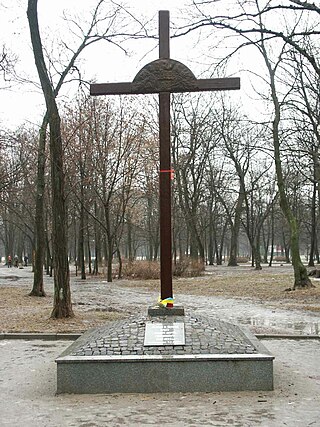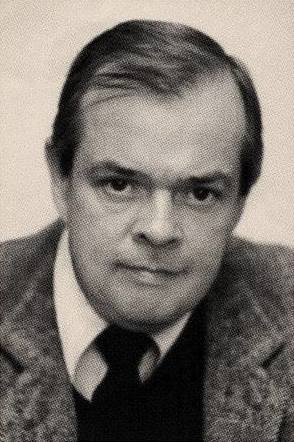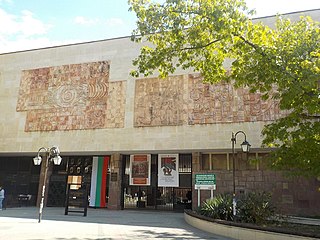
The Country Music Hall of Fame and Museum in Nashville, Tennessee, is one of the world's largest museums and research centers dedicated to the preservation and interpretation of American vernacular music. Chartered in 1964, the museum has amassed one of the world's most extensive musical collections.

The Holodomor, also known as the Ukrainian Famine, was a man-made famine in Soviet Ukraine from 1932 to 1933 that killed millions of Ukrainians. The Holodomor was part of the wider Soviet famine of 1930–1933 which affected the major grain-producing areas of the Soviet Union.

Dmytro Ivanovych Yavornytsky, or Dmitry Ivanovich Yavornitsky was a Russian and Ukrainian academician, historian, archeologist, ethnographer, folklorist, and lexicographer.

The Ukrainian Cultural and Educational Centre —also known as Oseredok —is a museum, gallery, and library in Winnipeg, Manitoba, celebrating the Ukrainian Canadian community. It is the largest Ukrainian cultural institution of its kind in Canada.

The Maxwell Museum of Anthropology is an anthropology museum located on the University of New Mexico campus in Albuquerque, New Mexico. The museum was founded in 1932 as the Museum of Anthropology of the University of New Mexico, becoming the first public museum in Albuquerque. In 1972 it was renamed the Maxwell Museum of Anthropology in honor of philanthropists Dorothy and Gilbert Maxwell.

The Folklore Museum at Mysore, India, is a museum which exhibits folk art and crafts from all over the state of Karnataka

Ivan Honchar Museum is a museum in Kyiv, Ukraine showcasing the culture of Ukraine and preserving Ukrainian folk art.

The Polish Museum of America is located in West Town, in what had been the historical Polish Downtown neighborhood of Chicago. It is home to numerous Polish artifacts, artwork, and embroidered folk costumes in its growing collection. Founded in 1935, it is one of the oldest ethnic museums in the United States and a Core Member of the Chicago Cultural Alliance, a consortium of 25 ethnic museums and cultural centers in Chicago.

James E. Mace was an American historian, professor, and researcher of the Holodomor.

Holodomor denial is the claim that the Holodomor, a 1932–33 man-made famine that killed millions in Soviet Ukraine, did not occur or diminishing its scale and significance.

Palestinian traditional clothing are the types of clothing historically and sometimes still presently worn by Palestinians. Foreign travelers to Palestine in the 19th and early 20th centuries often commented on the rich variety of the costumes worn, particularly by the fellaheen or village women. Many of the handcrafted garments were richly embroidered and the creation and maintenance of these items played a significant role in the lives of the region's women.

In 1932–1933, a man-made famine, known as the Holodomor, killed 3.3–5 million people in the Ukrainian Soviet Socialist Republic, included in a total of 5.5–8.7 million killed by the broader Soviet famine of 1930–1933. At least 3.3 million ethnic Ukrainians died as a result of the famine in the USSR. Scholars debate whether there was an intent to starve millions of Ukrainians to death or not.

The Holodomor was a 1932–33 man-made famine in Soviet Ukraine and adjacent Ukrainian-inhabited territories that killed millions of Ukrainians. Opinions and beliefs about the Holodomor vary widely among nations. It is considered a genocide by Ukraine, and Ukraine's Ministry of Foreign Affairs has lobbied for the famine to be considered a genocide internationally. By 2022, the Holodomor was recognized as a genocide by the parliaments of 23 countries and the European Parliament, and it is recognized as a part of the Soviet famine of 1932–1933 by Russia. As of June 2023, 35 countries recognise the Holodomor as a genocide.

The Pazardzhik Regional Historical Museum is a history museum in Pazardzhik, Bulgaria. It is located at 15 Konstantin Velichkov Square.

Zbarazh Castle is a fortified defense stronghold in Zbarazh, built during the times of the Polish–Lithuanian Commonwealth. It dominates the crests of the Zamkova Hills of Ternopil Oblast in Western Ukraine next to the city's central plaza that was not in so distant past surrounded by marshland. The castle existence has been credited to last members of the Polish Zbaraski family; Krzysztof and Jerzy Zbaraski.

The National Hellenic Museum is the second oldest American institution dedicated to displaying and celebrating the cultural contributions of Greeks and Greek-Americans. Formerly known as the Hellenic Museum and Cultural Center, the National Hellenic Museum is located in Chicago’s Greektown, at the corner of Halsted and Van Buren Streets. The National Hellenic Museum has recently undergone a modernization program that cumulated in the museum moving to its current building in December 2011. The official opening of the NHM took place on December 10th, 2011 and proved to be a marked event within the Greek community of Chicago.

The National Museum of the Holodomor-Genocide, formerly known as the Memorial in Commemoration of the Holodomor-Genocide in Ukraine, is Ukraine's national museum and a centre devoted to the victims of the Holodomor of 1932–1933, a man-made famine that killed millions in Ukraine. The museum was opened on the day of the 75th anniversary of the Holodomor in 2008. It gained the status of a national museum in 2010. The museum is located on the Pechersk Hills on the right bank of the Dnipro river in Kyiv, adjacent to the Kyiv Pechersk Lavra.

The Holodomor Memorial to Victims of the Ukrainian Famine-Genocide of 1932–1933 was opened in Washington, D.C., United States, on November 7, 2015. Congress approved creation of the Holodomor Memorial in 2006.

The Yosafat KobrynskyiNational Museum of Hutsulshchyna and Pokuttia Folk Art is a museum in Kolomyia, Ukraine with a collection of more than 50,000 objects documenting the history and folk culture of Hutsulshchyna and Pokuttia regions.

















